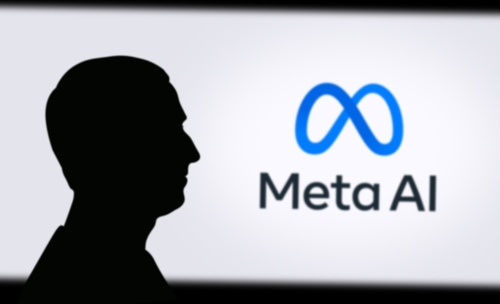Earnings Summary on Insperity

Key Points
EPS (non-GAAP) fell sharply to $0.26, missing consensus by 36.6% on a non-GAAP basis and dropping 70% year-over-year.
Revenue (GAAP) reached $1.70 billion, exceeding expectations and up 3% versus Q2 2024.
Gross profit (GAAP) and adjusted EBITDA both declined significantly, primarily due to higher healthcare benefit costs.
Insperity (NYSE:NSP), a leader in providing human resources (HR) and business performance solutions to small and medium-sized businesses, released its second quarter results on August 1, 2025. The most important news was a sharp decline in profitability despite stable revenue growth. Non-GAAP earnings per share (EPS) dropped to $0.26, missing analyst estimates of $0.41 (non-GAAP). Reported revenue (GAAP) was $1.7 billion, exceeding projections and up 3% year over year. The quarter was marked by heavy margin pressure from rising healthcare costs, resulting in a net loss (GAAP) and a drop in key profitability metrics. Overall, the period reflected resilient top-line growth but marked challenges in cost management and earnings performance.
| Metric | Q2 2025 | Q2 2025 Estimate | Q2 2024 | Y/Y Change |
|---|---|---|---|---|
| EPS (Non-GAAP) | $0.26 | $0.41 | $0.86 | (70%) |
| Revenue | $1.66 billion | N/A | N/A | N/A |
| Adjusted EBITDA | $32 million | $66 million | (52 %) | |
| Gross Profit | $223 million | $260 million | (14 %) | |
| Average WSEEs Paid | 309,115 | 306,958 | 1 % |
Source: Analyst estimates provided by FactSet. Management expectations based on management's guidance, as provided in Q1 2025 earnings report.
Business Overview and Key Focus Areas
Insperity is a professional employer organization (PEO) that delivers HR solutions to small and medium-sized businesses. Its core services include human resources administration, payroll, employee benefits, workers’ compensation, and regulatory compliance management. The company served an average of 309,115 worksite employees (WSEEs), offering a high-touch and technology-enabled experience for clients.
Recently, it has focused on strategic growth and client retention. Initiatives include expanding HR technology offerings such as the Insperity Premier platform, investing in operational efficiency, and leveraging scale to provide competitive benefits. Regulatory compliance, particularly through its Certified Professional Employer Organization (CPEO) status, clarifies employer status for tax purposes and supports client eligibility for tax credits. The ability to adapt pricing and benefit structures in response to cost trends is another critical success factor.
Quarter Highlights: Revenue, Margins, and Strategic Initiatives
For the latest quarter, Insperity’s revenue (GAAP) came in at $1.7 billion, fractionally above analyst projections and up 3% compared to the prior year, with a modest increase in average paid worksite employees, up 1% from Q2 2024. Continued execution on pricing supported this revenue growth, even as macroeconomic sentiment among small and medium-sized businesses remained subdued.
However, Profitability metrics declined sharply. Non-GAAP EPS fell to $0.26, down 70% year over year, and adjusted EBITDA nearly halved to $32 million. Gross profit dropped to $223 million, a decrease of 14%. The company reported a net loss of $5 million (GAAP), moving from reported net income of $18 million in Q2 2024. These declines were driven primarily by unexpected surges in healthcare benefit costs. Management explained that “Higher Q2 2025 healthcare costs were driven by continued elevated pharmacy trends and frequency of large claim activity.” Such increases can severely impact margins.
In response, management implemented new pricing and benefit plan designs aimed at offsetting some of the cost inflation. The company is working directly with healthcare partners and clients to adapt plan structures and pricing, with the goal of aligning these adjustments with the changing cost environment. For example, recent efforts included demographic-focused benefit migrations and contract discussions with UnitedHealthcare. These actions may not yield immediate relief but are expected to help in 2026 and onward.
Insperity also continued investing in key growth initiatives. Most notably, it committed $14 million in Q2 2025 and $27 million in the first six months of 2025 to advance its partnership with Workday. The new joint product, Insperity HRScale, is expected to begin beta client trials early next year. Management highlighted that “sales and marketing efforts have begun.” underscoring the importance of technology-driven HR solutions in expanding its mid-market footprint. These investments contributed to ongoing operating expenses but are viewed as necessary for long-term competitiveness and client satisfaction. The company also maintained cost discipline overall, as operating expenses declined 3% despite continued investment in product development and technology.
There was no material one-time event disclosed this quarter that significantly affected results outside of the elevated healthcare cost trends. On capital return, Insperity declared and paid quarterly dividends, returning $45 million to shareholders during the first half of 2025. It also repurchased approximately 225,000 shares for $19 million during the first six months of 2025.
Looking Ahead: Outlook and What to Watch
For fiscal 2025, management provided revised guidance reflecting the ongoing margin headwinds from healthcare costs. It now expects full-year adjusted EPS in the range of $1.81 to $2.51 for 2025, a reduction of 30% to 49% versus last year. Adjusted EBITDA is expected to range from $170 million to $205 million, down between 24% and 37%. Guidance for Q3 2025 points to continued pressures, with adjusted EPS forecast between $0.06 and $0.49 and adjusted EBITDA between $24 million and $44 million. Leadership indicated that further pricing and benefit plan changes could help deliver improvements next year, but did not offer specifics beyond these targets.
Investors should keep an eye on benefit cost trends, as further volatility could impact margins throughout the remainder of the year. Progress on the Workday partnership and the upcoming launch of Insperity HRScale, its new HR technology solution, will also be important for mid-market growth prospects. Management continues to emphasize cost control while investing for the long term, aiming for more substantial margin improvement in 2026.
Revenue and net income presented using U.S. generally accepted accounting principles (GAAP) unless otherwise noted.
Where to invest $1,000 right now
When our analyst team has a stock tip, it can pay to listen. After all, Stock Advisor’s total average return is 1,036%* — a market-crushing outperformance compared to 181% for the S&P 500.
They just revealed what they believe are the 10 best stocks for investors to buy right now, available when you join Stock Advisor.
*Stock Advisor returns as of July 29, 2025
JesterAI is a Foolish AI, based on a variety of Large Language Models (LLMs) and proprietary Motley Fool systems. All articles published by JesterAI are reviewed by our editorial team, and The Motley Fool takes ultimate responsibility for the content of this article. JesterAI cannot own stocks and so it has no positions in any stocks mentioned. The Motley Fool has no position in any of the stocks mentioned. The Motley Fool has a disclosure policy.




.jpg)
